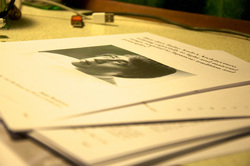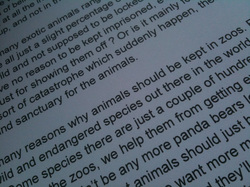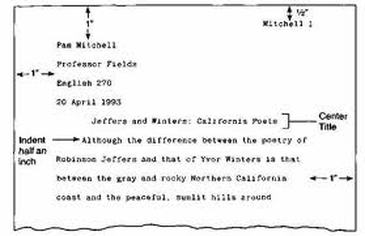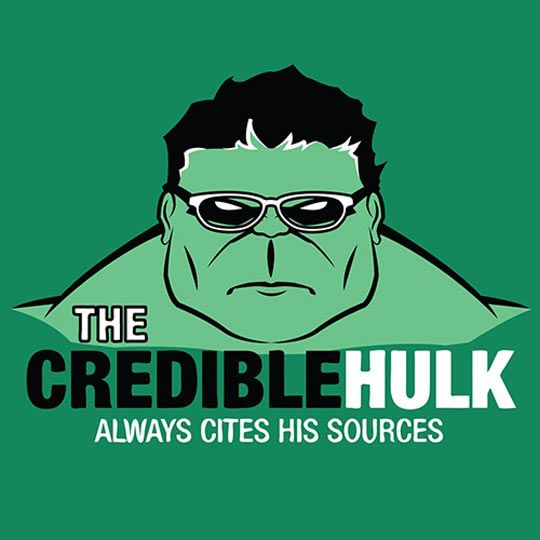MLA Formatting and Style Guide

Summary: MLA (Modern Language Association) style is most commonly used to write papers and cite sources within the liberal arts and humanities. This is also the format used by all subjects in our school.
This resource, updated to reflect the MLA Handbook for Writers of Research Papers (7th ed.) and the MLA Style Manual and Guide to Scholarly Publishing (3rd ed.), offers examples for the general format of MLA research papers, in-text citations, and the Works Cited page.
Helpful Website: Purdue Online Writing Lab (OWL)
http://owl.english.purdue.edu/owl/resource/747/15/
This resource, updated to reflect the MLA Handbook for Writers of Research Papers (7th ed.) and the MLA Style Manual and Guide to Scholarly Publishing (3rd ed.), offers examples for the general format of MLA research papers, in-text citations, and the Works Cited page.
Helpful Website: Purdue Online Writing Lab (OWL)
http://owl.english.purdue.edu/owl/resource/747/15/
MLA is a General Format

The MLA style dictates specific guidelines for how a paper should look. It also creates a system for referring to the sources of your information. By using these guidelines, all students will use the same format for parenthetical citations in their essays and their Works Cited pages.
Using the MLA format will a writer's credibility because that writer demonstrates the accountability of their information by naming their source material. Using MLA formatting can also protect the writer from being accused of plagiarism. Using other people's words or ideas without crediting them as the source of the material is plagiarism, whether you meant to plagiarize or not.
Using the MLA format will a writer's credibility because that writer demonstrates the accountability of their information by naming their source material. Using MLA formatting can also protect the writer from being accused of plagiarism. Using other people's words or ideas without crediting them as the source of the material is plagiarism, whether you meant to plagiarize or not.
General Guidelines

- Type your paper on a computer and print it out on standard, white 8.5 x 11-inch paper.
- Always double-space the entire text of your paper
- Use a legible font (e.g. Times New Roman). Whatever font you choose, MLA recommends that the regular and italics type styles contrast enough that they are recognizable one from another.
- The font size should be 12 pt.
- Leave only one space after periods or other punctuation marks (unless otherwise instructed by your instructor).
- Set the margins of your document to 1 inch on all sides.
- Indent the first line of paragraphs one half-inch from the left margin. MLA recommends that you use the Tab key as opposed to pushing the Space Bar five times.
- Create a header that has your last name numbers all pages consecutively. It should be 1/2 inch from the the top of the page and flush with the right hand margin.
- Use Italics when stating the title of a longer works of literature and movie titles like Moby Dick and Rocky (Book, Play, Epic Poem) and Quotation marks when stating the title of shorter works of literature like "Ode to a Grecian Urn" (poems, songs, articles).
- Always double-space the entire text of your paper
- Use a legible font (e.g. Times New Roman). Whatever font you choose, MLA recommends that the regular and italics type styles contrast enough that they are recognizable one from another.
- The font size should be 12 pt.
- Leave only one space after periods or other punctuation marks (unless otherwise instructed by your instructor).
- Set the margins of your document to 1 inch on all sides.
- Indent the first line of paragraphs one half-inch from the left margin. MLA recommends that you use the Tab key as opposed to pushing the Space Bar five times.
- Create a header that has your last name numbers all pages consecutively. It should be 1/2 inch from the the top of the page and flush with the right hand margin.
- Use Italics when stating the title of a longer works of literature and movie titles like Moby Dick and Rocky (Book, Play, Epic Poem) and Quotation marks when stating the title of shorter works of literature like "Ode to a Grecian Urn" (poems, songs, articles).
Formatting the First Page of Your Paper

- Do not make a title page for your paper unless specifically requested.
- In the upper left-hand corner of the first page, list your name, your instructor's name, the course, and the date. Again, be sure to use double-spaced text.
- Double space again and center the title.
- Do not underline, italicize, or place your title in quotation marks; write the title in Title Case (standard capitalization), not in all capital letters.
- Use quotation marks and/or italics when referring to other works in your title, just as you would in your text: Fear and Loathing in Las Vegas as Morality Play; Human Weariness in "After Apple Picking."
- Double space between the title and the first line of the text.
- In the upper left-hand corner of the first page, list your name, your instructor's name, the course, and the date. Again, be sure to use double-spaced text.
- Double space again and center the title.
- Do not underline, italicize, or place your title in quotation marks; write the title in Title Case (standard capitalization), not in all capital letters.
- Use quotation marks and/or italics when referring to other works in your title, just as you would in your text: Fear and Loathing in Las Vegas as Morality Play; Human Weariness in "After Apple Picking."
- Double space between the title and the first line of the text.
|
|
|
In-Text or Parenthetical Citations and Examples

Examples:
This quote is taken from Arthur Miller's play, The Crucible:
"Excellency, a moment. I think this goes to the heart of the matter" (Miller 99).
- When using a source, you must include parenthetical citations= (Author #).
- This will acknowledge who’s idea is being presented and where that
idea is documented.
- If you did not come up with the idea, state who did and where.
- These references come at the end of the sentence.
- For every quote the author, title, and page number should be referenced.
- If you do not mention the author's name in the the same sentence as the quote, you must put it in the parenthetical reference.
The judges collective fear is demonstrated when Hale says to Danforth,
“Excellency, a moment. I think this goes to the heart of the matter” and
Danforth is reluctant to believe that he and the courts have been fooled (Miller 99).
Or
Miller demonstrates the collective fear of the judges when Hale says to Danforth, “Excellency, a moment. I think this goes to the heart of the matter” and Danforth is reluctant to believe that he and the courts have been fooled (99).
- Type the quote exactly as it is written in the text.
- When using two or more sources, state the title of the source of the quote in the sentence or in the parenthetical citation.
This quote is taken from Arthur Miller's play, The Crucible:
"Excellency, a moment. I think this goes to the heart of the matter" (Miller 99).
- When using a source, you must include parenthetical citations= (Author #).
- This will acknowledge who’s idea is being presented and where that
idea is documented.
- If you did not come up with the idea, state who did and where.
- These references come at the end of the sentence.
- For every quote the author, title, and page number should be referenced.
- If you do not mention the author's name in the the same sentence as the quote, you must put it in the parenthetical reference.
The judges collective fear is demonstrated when Hale says to Danforth,
“Excellency, a moment. I think this goes to the heart of the matter” and
Danforth is reluctant to believe that he and the courts have been fooled (Miller 99).
Or
Miller demonstrates the collective fear of the judges when Hale says to Danforth, “Excellency, a moment. I think this goes to the heart of the matter” and Danforth is reluctant to believe that he and the courts have been fooled (99).
- Type the quote exactly as it is written in the text.
- When using two or more sources, state the title of the source of the quote in the sentence or in the parenthetical citation.
|
|
|

